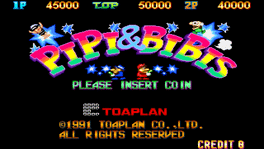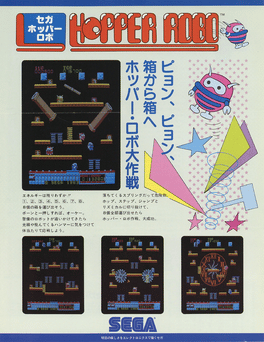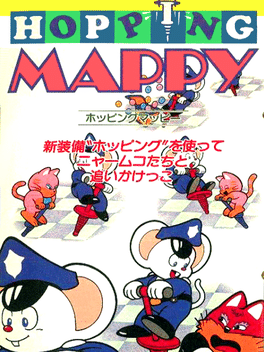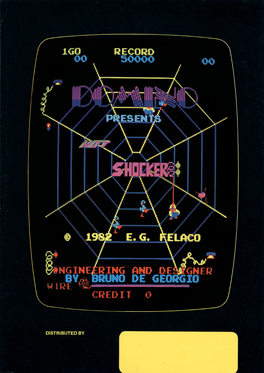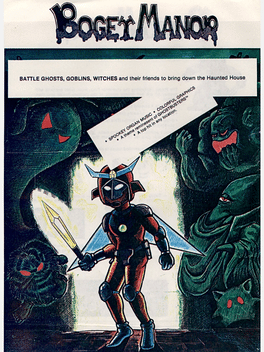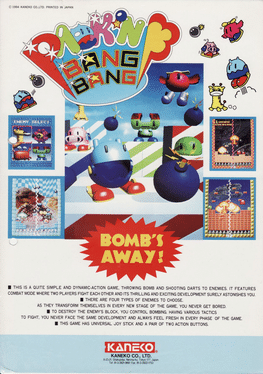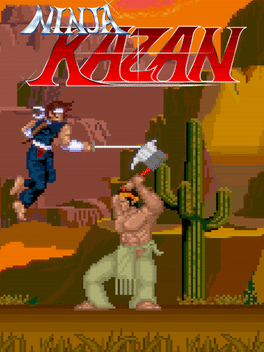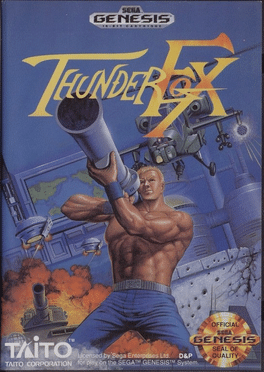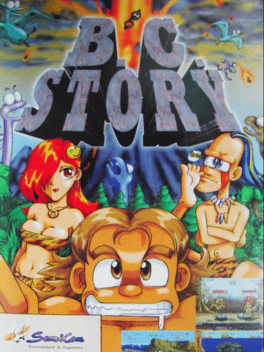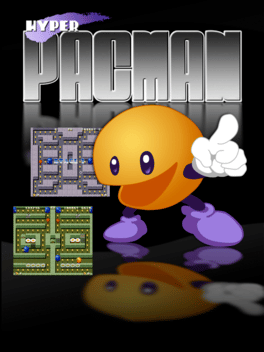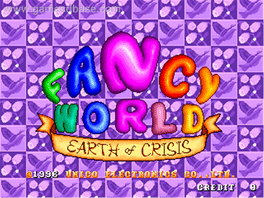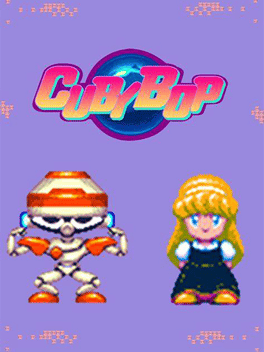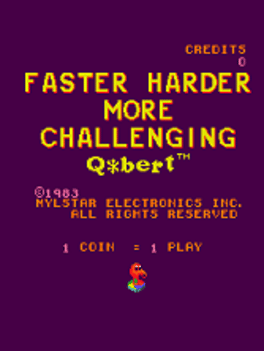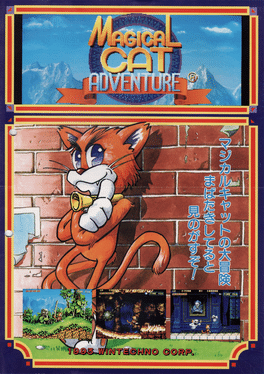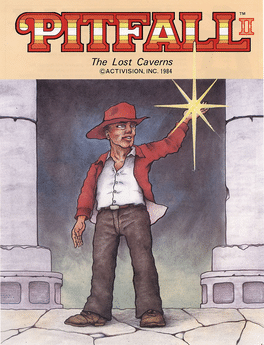Most Popular Playstation 2 Games - Page 288
-
Pipi & Bibi's
1992
Pipi & Bibi's
1992
Like its sister game Snow Bros., Pipi & Bibi's is an early platform game in the vein of Bubble Bobble where players must defeat all on-screen enemies before moving on to the next level. -
Hopper Robo
1983
Hopper Robo
1983
A Platform/Run 'N Jump game where a robot must jump between platforms carrying boxes that he must drop onto a conveyor belt. -
Hopping Mappy
1986
Hopping Mappy
1986
The game brings back the characters from Mappy but it is not as effective; the reason for this is most likely because the player does not get any new weapons after each bonus round. The rounds do not get any more confusing because the cats move in preset patterns - and the main strategy that is used to get past them, is comprised of a difficult way to more or less stand still. There are a total of thirty-one distinct rounds that the player can continue through even if he runs out of lives -
Hot Shocker
1982
-
Jump Coaster
1983
Jump Coaster
1983
In this game, you maneuver a caped man along roller-coaster tracks, grabbing money bags and trying to save your girlfriend, all the while avoiding cops and gorillas (which either swing on the ropes and throw deadly bananas and apples at you, or ride in roller-coaster cars, intent on hitting you.) The game has four screens in each level. Each screen is completed in one of two ways: getting to your girlfriend, or grabbing all the money bags on the screen, then getting the large money bag which appears. -
Bogey Manor
1985
Bogey Manor
1985
You play as a young ghost hunter boy who runs around a haunted house. Your objective is to destroy with your sword all the crystal balls that are in the house, you must go through all the floors and go through the doors guided by the map at the top of the screen in a time limit without getting caught by the ghosts, frankenstein, witches and other creepy creatures. With the help of your magic glove can freeze ghosts for a short period of time to later hit them with the sword. Once you've destroyed all the crystal balls, the haunted house starts falling apart, and you must run for your life towards the exit to win the stage. You can transform into a super hero, entering through the flashing door to grab special items. -
Super Trio
1994
-
Dokkaebi-ga Ganda
1995
Dokkaebi-ga Ganda
1995
Often also refered to as Cobi Comi, after the two kobold protagonists, the game offers standard platforming fare by Senori Box, who should disappear after a few more announcements of games that got never released, only to re-emerge years later as Jaemi Inneun Nyeoseokdeul (재미있는 녀석들). -
Packin Bang Bang
1994
-
Ninja Kazan
1988
-
Thunder Fox
1990
Thunder Fox
1990
Thunder Fox is an arcade game created by Taito. It was released in arcades in 1990 and for the Sega Mega Drive/Genesis in 1991. It was later released on various consoles such as the Xbox and PlayStation 2 in a compilation of Taito classics. The title of the compilation is Taito Legends. The gameplay for Thunder Fox is similar to other popular side scrolling action games like Namco's Rolling Thunder (video game), and Sega's Shinobi (arcade game). There are three buttons for each player - Attack, which normally is used to make Thunder and Fox (the game's heroes) stab with their knives. Jump, and a Weapon button which fires or throws a weapon acquired by the heroes. What makes this game unique is that the game gives players the opportunity to allow players to use their obtained weapons (save for the hand grenades) as melee weapons which helps conserve ammunition for when it's needed. -
B. C. Story
1997
B. C. Story
1997
B.C. Story is a sports arcade game released by SemiCom in 1997. In the game, one can select from caveman characters Sonlo, Milo or Ballo and engage in "B.C" sports events such as running and climbing. -
Hyper Pac-Man
1994
Hyper Pac-Man
1994
This is an updated version of Namco's "Pac-Man", featuring forced-perspective 3-D graphics that allow the players to jump over the enemy ghosts; in a similar fashion to Namco's "Pac-Mania", released in 1987. There are secret items and food to be found on each level that increases the player's power and score. For extra bonus stages, complete a level without eating any of the power dots. -
Head Panic
2000
Head Panic
2000
A platform game in which you throw balls to kill the enemies. Very similar to the Snow Bros. S.aga -
Cuby Bop
1990
Cuby Bop
1990
You and an opponent, either the computer or another player, throw a ball up to try and break colored blocks; blue for player one, red for player two. Only when the ball is thrown as the player's color will it break the blocks. Otherwise, it will just bouce off your opponent's blocks. -
Faster Harder More Challenging Q*bert
Hop on all the squares to change them into the correct color. Avoid hitting Coily and Q*Bertha. Jump on the platforms to be carried to the top of the pyramid and maybe make an enemy jump to its doom. Believing that the original game was too easy, Davis initiated development of Faster Harder More Challenging Q*bert (also known as FHMC Q*bert) in 1983, which increased the difficulty, introduced Q*bertha and added a bonus round. However, the project was canceled and the game never entered production. Despite this, Davis later released FHMC Q*bert's ROM image onto the web. -
Magical Cat Adventure
1993
A cat encounters many obstacles and enemies while traveling through various terrains. -
Pitfall II: Lost Caverns
1985
Pitfall Harry travels through the jungle and caverns to find all kinds of treasures including gold bars, silver bars, money bags and diamond rings. Pitfall Harry must avoid or jump over dangers such as logs, snakes, scorpions, fires, etc. He must also swing on vines to get across mud bogs, tar pits, crocodile-infested ponds, etc. As for some crocodile-infested ponds which have no vines at all, Pitfall Harry must carefully jump on their heads but not their mouths with careful timing to get across. He can also climb up and down ladders and jump over open holes. He can also even swim across underground streams while avoiding electric eels. Pitfall Harry must also sometimes avoid falling rocks and other plummeting projectiles. The caverns have different floors connected by ladders and are like a maze. Points are scored by collecting treasures. -
Magic Sword: Heroic Fantasy
1990
Magic Sword fully titled as Magic Sword: Heroic Fantasy, is a side-scrolling fantasy arcade game released by Capcom in 1990. The game casts the player as a hero who must fight his way through a mystical tower in order to save the world. The player can use a sword, axe or magic, and can also rescue and recruit potential allies of various character classes, each of which has his or her own special abilities. Three years earlier, Capcom had released the similar Black Tiger in 1987.
